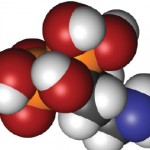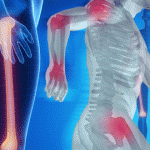NEW YORK (Reuters Health)—Bone resorption increases during pregnancy and continues to be high postpartum, according to new findings using lead testing to measure bone turnover. Researchers also found unexpected evidence that maternal lead burden is transferred to the fetus. “These data confirm calcium balance studies that indicate increased bone resorption throughout pregnancy and lactation,” Dr….

Inflammation May Sensitize Patients with Osteoarthritis to Pain
A recent editorial in Arthritis & Rheumatology explored the role of sensitization, not nociception, as a key mechanism of pain for patients with knee OA, as well as inflammation’s role in pain perception. Recent research of synovitis and joint effusion supports the idea that early prevention or treatment of sensitization may be paramount to reducing long-term pain in patients with knee OA…

Osteoarthritis Treatments: Monoclonal Antibody Starts Clinical Trial & Fasinumab Promising for Treating Pain
Recent clinical trials have evaluated the efficacy of GSK3196165, a monoclonal antibody, and fasinumab, a nerve growth factor antibody, in treating patients with osteoarthritis and pain…

New Bisphosphonate Therapy Recommendations for Postmenopausal Osteoporosis
A task force of the American Society for Bone and Mineral Research (ASBMR) has released new recommendations delineating the potential benefits and risks of prolonged therapy with oral and IV bisphosphonate therapy and providing guidance on duration of bisphosphonate therapy for postmenopausal osteoporosis.1 The task force makes clear that data and clinical experience on which…

Epilepsy Patients May Have Poor Bone Health, High Fracture Risk
Some patients with epilepsy have a higher risk of fracture due to falls, and some studies have suggested that anti-epileptic drugs may also contribute to the fracture risk. In a recent review, researchers examined if there is a link between epilepsy and osteoporosis, making recommendations to aid future research…
Foot Orthoses vs. Rocker-Sole Footwear: Which Treatment Is More Effective for Reducing Pain in First MPT Joint OA?
Foot osteoarthritis (OA) of the first metatarsophalangeal (MTP) joint is thought to have biomechanical factors, but its treatments have not been comprehensively tested in clinical trials. In the first study to explore the efficacy of mechanical interventions, researchers compared the effectiveness of foot orthoses and rocker-sole footwear in reducing pain. Both interventions were effective, but the foot orthoses group wore the intervention for significantly more hours than the footwear group…

Researchers Work to Untangle the Relationship Between Blood Lipids, Bone Health & Diet
A recent editorial examined research findings on how low levels of high-density lipoprotein (HDL) in the blood affect bone health, resulting in cartilage dysfunction and the development of osteoarthritis (OA). Authors note that a high-fat diet in mice with HDL deficiency resulted in OA development; thus, they conclude that in patients with metabolic syndrome, HDL may have a causative relationship to OA…

Romosozumab Promising for Osteoporosis Treatment; Setbacks for Fulranumab Clinical Trials
Two studies have shown that romosozumab is effective for increasing bone mineral density in both men and women with osteoporosis. And due to safety concerns, Janssen has dropped out of clinical trials for fulranumab, which is being studied to treat OA pain…
Abaloparatide May Boost BMD in Older Women with Osteoporosis
NEW YORK (Reuters Health)—The investigational drug abaloparatide may help postmenopausal women increase their bone mineral density (BMD) and reduce their risk of fracture, new industry research suggests. “What was surprising and very important about this study was that, although some drugs for osteoporosis don’t work across all patient subgroups, abaloparatide provided persistent protection against fracture…

Platelet-Rich Plasma Therapy May Treat Degenerative Tendinopathies & Pain
A recent small-scale study showed that patients who received platelet-rich plasma therapy for tendon healing experienced clinically important improvements in pain and disability compared with placebo. Additionally, MRI showed that some participants had improvement in the pathoanatomy of the rotator cuff six months after treatment…
- « Previous Page
- 1
- …
- 25
- 26
- 27
- 28
- 29
- …
- 46
- Next Page »